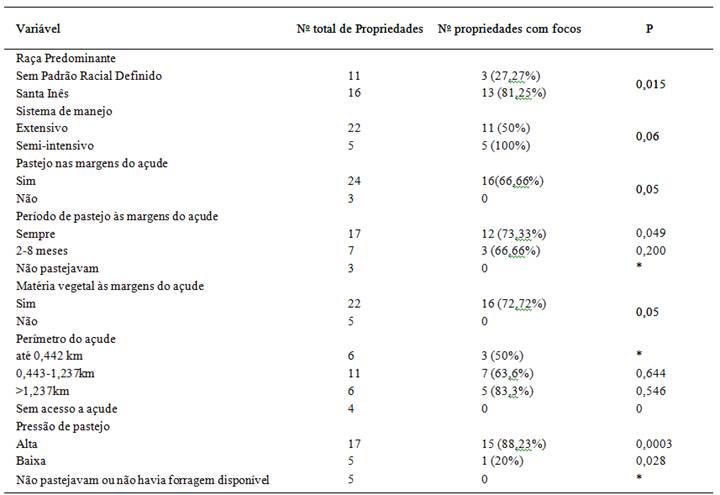With the objective to determine the epidemiological aspects of conidiobolomycosis and rhinofacial pythiosis in sheep, a case-control study was conducted in 27 farms (16 cases and 11 controls) in the states of Paraíba and Rio Grande do Norte. In nine (56.3%) farms only one outbreak was observed and in seven, two outbreaks occurred, totaling 23 outbreaks. In 20 farms only cases of conidiobolomycosis occurred and in three farms cases of conidiobolomicosis occurred together with cases of pythiosis. In conidiobolomycosis, morbidity ranged from 0.7% to 73.3% and lethality rate was 100%. Thirteen outbreaks (56.3%) occurred in the rainy season (January to May), six (26.1%) in the dry season (June to December) and in four it was not informed. In all farms with cases, sheep had access to ponds for the whole year or for periods of 2-8 months. In the univariate analysis of risk, the variables associated with the occurrence of conidiobolomycosis were: animal grazing on the borders of the ponds; presence of vegetable matter consisting mainly of aquatic plants in the pond borders; period of grazing on the pond borders; high grazing pressure; and predominant breed of sheep, being the Santa Inês breed the most affected. It was concluded that the combination of factors such as continuous grazing in wetlands with decomposed vegetable matter and soil rich in organic matter exposes the animals to Conidiobolus spp. and predisposes to the occurrence of conidiobolomycosis. The establishment of pastures for cutting at the borders of the ponds can be an effective measure to control conidiobolomycosis
Conidiobolus spp.; risk factors; sheep; entomophthoromycosis

